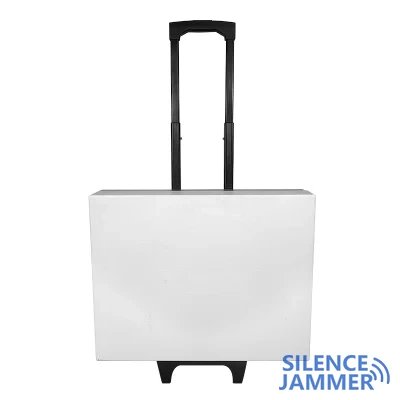The big role of signal jammer devices in prisons
signal jammer technology annoys people, especially in prison environments, and its use has sparked widespread controversy and discussion. Robert Johnson, an officer at Lee Correctional Detention Center in Bishopville, South Carolina, was targeted for blocking smugglers from entering the prison and even encountered smuggled cell phones. The incident highlighted the seriousness of illegal cell phone use in prisons. Federal prison officials are testing jammer technology in the hope of addressing the threat of prisoners using cell phones.

At the federal prison in Cumberland, Maryland, Deputy Attorney General Beth Williams conducted several hours of testing aimed at limiting prisoners' criminal activities through signal blocking technology. Although Williams did not provide specific test details, she emphasized that this is an important step in preventing prisoners from using cell phones to continue committing crimes. Similar tests were conducted as early as 2010, but as technology develops, prisoners' means of smuggling devices are constantly upgrading, making the use of jammer technology more urgent.
The subsequent promotion of signal jammers and the controversy they have caused
Widespread use of this technology may not be limited to prisons, but could extend to other public places to ensure that cell phones are not misused. Officials across the country have identified prisons as the epicenter of security threats. Williams noted that limiting the ability of prisoners to commit crimes inside prisons is essential to preventing criminal activity. Federal agencies have renewed interest in jammer technology, and U.S. Attorney General Rod Rosenstein announced at the National Judicial Conference that federal prisons will retest the technology. He said that cell phones are used to carry out criminal activities, promote violent crimes and hinder law enforcement, so this is a major security issue.

The Federal Bureau of Prisons confiscated 5,000 cell phones in 2016, and preliminary data shows that this number has increased over the past year. State prison and state prison officials have been discussing the dangers of cell phones in the hands of prisoners for years. These phones enable prisoners to continue criminal activities in prison, such as drug trafficking, extortion, and even threatening witnesses.
Although jamming technology has shown some potential in combating illegal cell phone use, it also raises a number of questions and concerns. For example, the jamming signal may affect people who use cell phones legally near the prison. In addition, prisoners may find ways to bypass the jammer or use other means to carry out criminal activities. Therefore, how to effectively apply jamming technology without affecting normal communications has become an urgent problem to be solved.
Overall, the application of jammer technology in prisons is to deal with the security threats posed by prisoners' illegal use of mobile phones. The testing and promotion of this technology reflects the efforts of prison administration departments in preventing crime. However, this process also needs to balance the contradiction between security and freedom of communication to ensure the effectiveness and legitimacy of the technology. With the continuous advancement of science and technology, jamming technology in prisons will continue to develop to meet increasingly complex security challenges.


